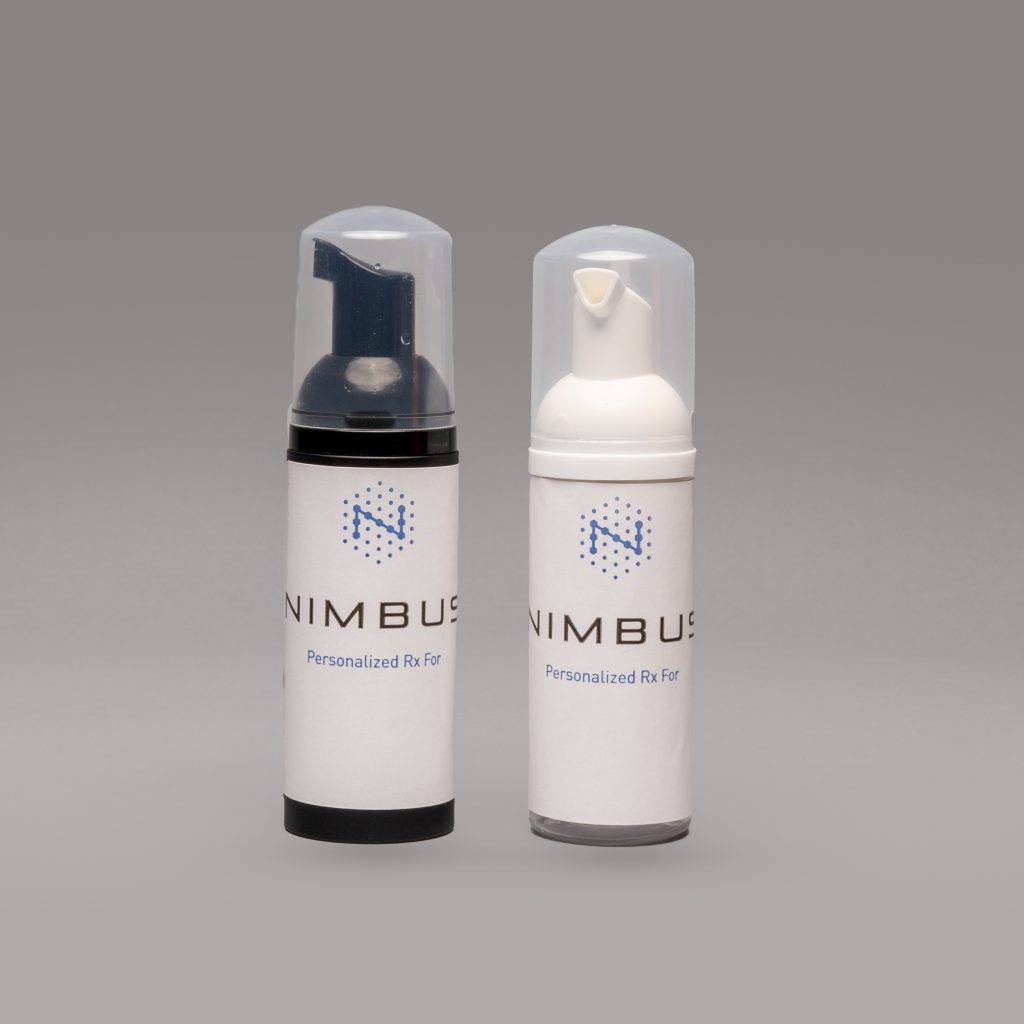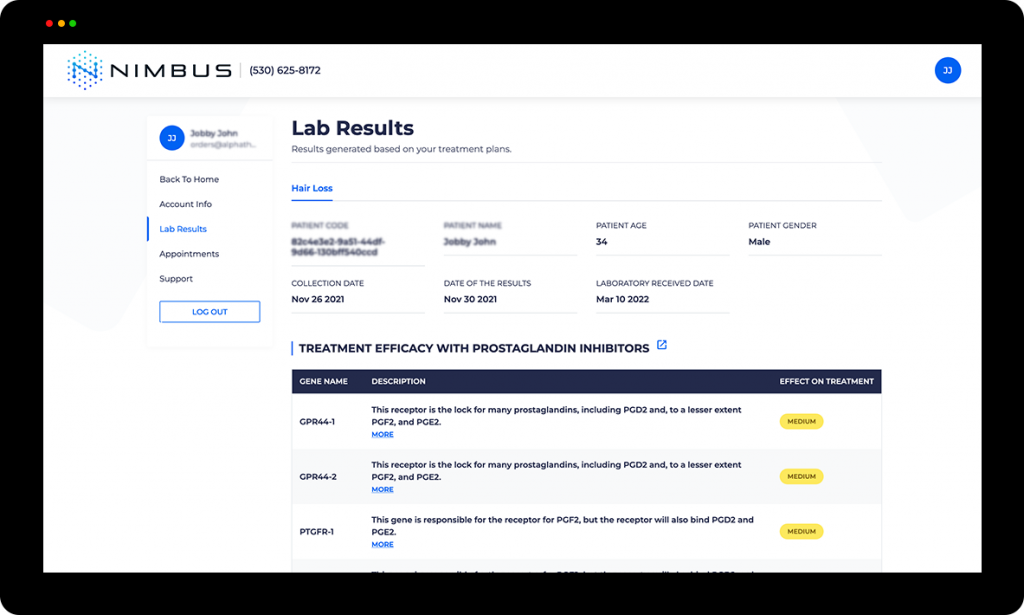Hair Loss
Fixing hair loss once and for all
Nimbus is the only solution that treats hair loss at its true root cause -- your genetics. By analyzing the underlying cause of your specific hair loss, we customize a treatment plan specific for you.
- Treatments starting at $69/month
- US-licensed healthcare professionals
- Personalized prescription treatment shipped to your door in 2-3 days

Hair Loss Is Genetic
Two-thirds of men in the U.S. experience some form of hair loss, or alopecia, by the age of 35. Additionally, Male Patterned Baldness (MPB), or androgenetic alopecia, affects 50 million men in the U.S.
- Poor diet
- Pollution
- Using harsh chemicals
- Stress
Personalized Treatments
- Minoxidil (Rogaine): a topical treatment used to regrow hair on the top and crown of your head.
- Finasteride: a pill used to stop further hair loss. And one option that is not FDA approved, but is widely and effectively used:

Meet our providers

Natalie Kash, MD, FAAD
Dr. Natalie Kash is a board-certified dermatologist and fellowship-trained hair restoration surgeon who specializes in hair loss. She is committed to advancing the field of hair restoration through both clinical and research endeavors. Her unique training and experience as both a dermatologist and hair restoration surgeon allow her to truly treat any type of hair loss patient and start with patients on their journey from proper diagnosis to treatment including both medical and surgical therapies.

Rahil B. Roopani, MD
Dr. Rahil Roopani is a fellowship-trained hair restoration surgeon who focuses on providing comprehensive hair restoration solutions to hair loss patients. His approach to treating patients in the field of hair restoration first relies on education and empowering patients to find sustainable therapies individualized to them. As a hair restoration specialist and hair loss patient himself, Dr. Roopani is committed to constantly improving patients’ experiences and outcomes on their hair restoration journey.

Our patented test and algorithm
- Androgenetic alopecia
- Alopecia areata
- Telogen effuvium
How It Works
- Blood circulation
- Testosterone levels
- Stress
- Low vitamin levels
- Inflammation
- Hormonal changes

Hair loss is directly related to our genetics.
There are 6 factors that can hinder or promote hair growth and they are all at the mercy of our genes. Since human genome sequencing began, we have explored numerous ways that differences in genes can impact our bodies and our lives. At Nimbus, we’ve created the first genetic test for hair loss and leverage personalized prescriptions to address the root cause of it.
Hair growth regulators
The metabolism of hair growth regulators, like prostaglandins, can either help our hair grow or cause the hair follicle to shrink and stop growing.
Inflammation
Improper management of inflammation is the root cause of many problems in our bodies and it plays a big role in hair loss.
Hormonal effect
Dihydrotestosterone (DHT) is the primary hormone responsible for hair loss.
Blood flow
Hair follicles are living tissue and need a steady supply of nutrients from blood flow to remain healthy.
Collagen formation
This protein is a building block for joints, nails, connective tissue, and skin.
Vitamin and mineral metabolism
Vitamin A and biotin are important for normal hair growth and our diets are often deficient in these nutrients.
What Nimbus Hair DNA Test analyzes
- Metabolism of hair growth regulators
- Inflammation
- Hormonal effect
- Blood flow
- Collagen formation
- Vitamin and mineral metabolism
Factors that promote alopecia
- Increased testosterone levels
- Hormonal changes
- Inflammation
- Blood circulation issues
- Low levels of vitamins and minerals
- Stress
- Pollution
- Others
Nimbus
Hair DNA Test
- Nimbus Hair DNA Test (NHD Test) analyzes 13 genes and 48 genetic variations related to alopecia.
- Genetic test based on state-of-the-art DNA micro array technology.
- A patented algorithm provides a personalized treatment solution from 175 million therapeutic alternatives.
- Genetic analysis has a 99.9% accuracy
Who is it for
Nimbus Hair DNA Test is indicated to be used by:
Men and women who have tried different treatments with few or no success.
- Everyone who wants to understand how their genetics affect alopecia treatment.
- Patients with family history of alopecia
Types of alopecia analyzed:
- Androgenetic alopecia
- Alopecia areata
- Telogen effluvium
Why Nimbus Hair DNA Test
Fully personalized treatment
A personalized prescription is developed for you by your healthcare professional.
Genetic factors explanation
Nimbus Hair DNA Test (NHD Test) provides a full report with explanation of your genetic characteristics and their relationship with alopecia treatment.
Specialist support
Your prescriber will now have a deeper understanding of your genetic characteristics and how they relate to alopecia.
Once in a lifetime test
Your genetic results will not change during your life.
Let’s learn more about Nimbus DNA Hair Test
Finasteride VS Dutasteride
Why is Vitamin A important for hair growth?
Does Rogaine® actually work?

